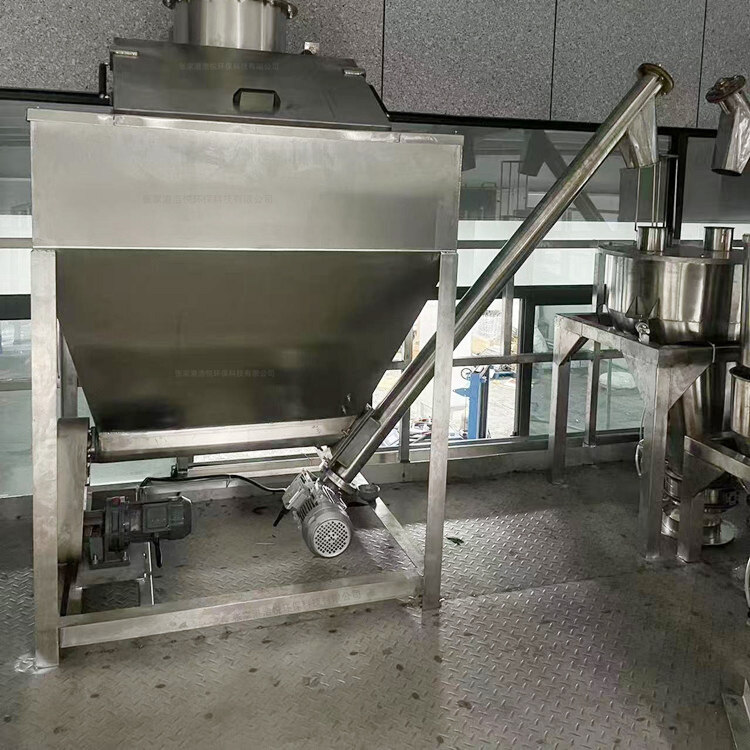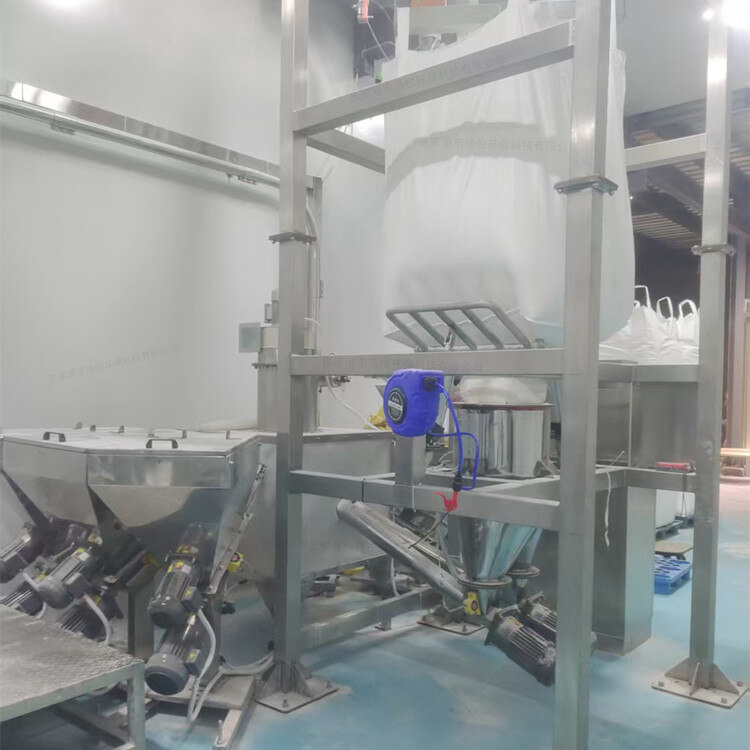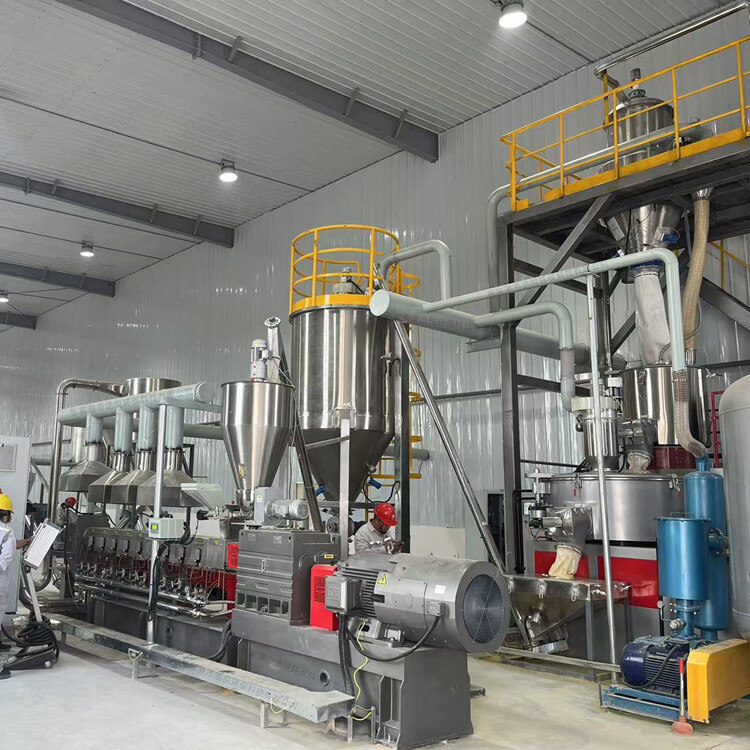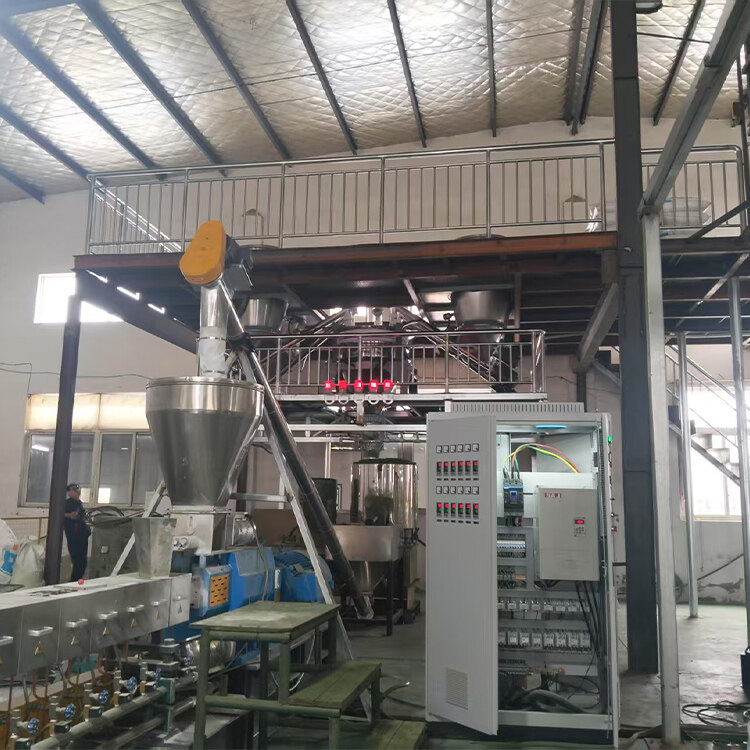- Introduction to automatic batching machine and fully automatic batching machine equipment
- The powder metering system tells you about the introduction of the mixing and drying machine
- 1000kg vacuum feeding machine
- Fully automatic small material batching system
- Research on Innovation of Automatic Weighing Machine Technology
- Design and operation of automatic batching system using PLC, industrial computer and frequency converter
Powder metering and batching system
- Category:Automatic metering and conveying equipment
- Hits:123次
- Release Date:2025-06-27
- Share:
- Inquiry
- Details
In many industrial fields such as chemical, pharmaceutical, food, and new energy, precise measurement and reasonable ratio of powder materials are key links to ensure product quality and optimize production processes. The powder metering and batching system integrates high-precision metering technology, automation control technology, and intelligent management system to achieve precise control of the entire process of powder materials from storage, metering to batching. It effectively solves the problems of low efficiency, large errors, and heavy pollution in traditional manual operations and has become an important force in promoting the transformation of modern industrial production towards automation and intelligence.
1、 System working principle
The powder metering and batching system operates based on principles of mechanics, electricity, and automation control. Firstly, the physical quantities such as weight and flow rate of the powder material are converted into electrical signals through detection components such as weighing sensors and flow sensors; Next, the signal is amplified, filtered, A/D converted, and other processed before being transmitted to the control system; The control system analyzes and calculates based on preset formula parameters, and issues control commands; Finally, the executing mechanism (such as screw conveyor, rotary feeding valve, etc.) adjusts the operating status according to instructions to achieve precise measurement and automatic batching of powder materials.
Taking the weighing based batching as an example, when the powder material enters the weighing hopper, the weighing sensor installed below the hopper undergoes elastic deformation due to force, and the resistance value of the internal resistance strain gauge changes accordingly. The resistance change is converted into a voltage signal through a Wheatstone bridge, amplified by a signal conditioning circuit and digitized by an A/D converter, and transmitted to the PLC control system. The PLC compares real-time weight data with the preset formula weight, and controls the material conveying volume by adjusting the speed of the screw conveyor until the set weight is reached.
2、 Core system composition
(1) Material storage unit
This unit mainly consists of various types of silos, used to store different types of powder materials. The silo is usually made of stainless steel material, with smooth and polished inner walls to reduce material adhesion; For materials with strong moisture absorption, the silo is also equipped with drying and moisture-proof devices. The top of the silo is equipped with dust removal equipment to prevent dust from overflowing; Install vibrators and arch breaking devices at the bottom to avoid material clumping and bridging, ensuring smooth material discharge. In addition, the silo is equipped with level sensors (such as radio frequency admittance and ultrasonic) to monitor material inventory in real time. When the material falls below the set value, an automatic alarm is triggered to remind operators to replenish the material.
(2) Measurement unit
Weighing measuring device: It is the most commonly used measuring method, characterized by high accuracy and strong adaptability. Composed of weighing hopper, weighing sensor, signal processing module, and control system, the accuracy can reach 0.05% FS (full range). It can be divided into static weighing and dynamic weighing: static weighing is suitable for batch batching, and materials are measured in a static state in the weighing hopper; Dynamic weighing is used for continuous production, where materials are measured in real-time during the conveying process.
Volumetric metering device: It transports powder materials according to a fixed volume through equipment such as rotary valves and screw metering pumps. The rotary valve gauge utilizes the periodic rotation of the rotor to deliver materials in a fixed volume; The screw metering pump relies on the spiral motion of the screw to push materials, and controls the flow rate by adjusting the screw speed. This method has a simple structure and easy maintenance, but the measurement accuracy is relatively low, making it suitable for powder materials that do not require particularly high accuracy and have good flowability.
Flow metering devices: commonly used in pneumatic conveying scenarios, such as impulse flow meters and Coriolis mass flow meters. The impulse flowmeter calculates the flow rate by detecting the impact force of the powder flow on the detection plate; The Coriolis mass flowmeter is based on the principle of Coriolis force and can directly measure mass flow without being affected by factors such as temperature and pressure. Its accuracy can reach up to ± 0.1% and it is commonly used in high-precision measurement applications.
(3) Ingredient control unit
Using programmable logic controller (PLC) or distributed control system (DCS) as the core, combined with human-machine interface (HMI). PLC is responsible for real-time collection of sensor data, execution of measurement control algorithms, and driving the actions of the executing mechanism; DCS is suitable for large and complex systems, enabling centralized monitoring and management of multiple ingredient points. HMI provides operators with an intuitive interface for setting formulas, adjusting parameters, monitoring operational status, and handling fault alarms. The system supports multiple recipe storage, which can be quickly switched according to production needs. It also has data recording and traceability functions, automatically storing information such as the time, material type, and dosage of each ingredient, facilitating production management and quality analysis.
(4) Conveyor and mixing unit
Conveying equipment: including screw conveyors, pneumatic conveying devices, belt conveyors, etc. Spiral conveyor is suitable for short distance and low flow powder transportation, with good sealing performance; Pneumatic conveying devices use vacuum or positive pressure airflow to transport materials, which can achieve long-distance, high flow conveying, and are fully enclosed and pollution-free. They are commonly used in industries such as food and pharmaceuticals; Belt conveyors are suitable for horizontal or small angle inclined conveying of bulk powder materials.
Mixing equipment: such as double helix cone mixer, plow blade mixer, etc., to thoroughly mix various prepared powder materials evenly. The double helix conical mixer utilizes the revolution and rotation of the double helix to generate strong convection and diffusion mixing of materials; The plow blade mixer uses high-speed rotating plow blades to scatter and shear materials, resulting in high mixing efficiency and suitable for situations with high mixing requirements.
3、 Typical application scenarios
(1) Pharmaceutical industry
In drug production, the powder metering and batching system is used for precise proportioning of raw materials and excipients, ensuring accurate drug composition and stable quality. For example, in the tablet production process, the system accurately measures various raw materials and transports them to the mixing equipment through vacuum to avoid cross contamination and strictly comply with GMP (Good Manufacturing Practice) requirements. At the same time, the system provides a complete record of ingredient data for easy traceability of drug quality.
(2) Food industry
Food processing requires extremely high hygiene and measurement accuracy. In the production of milk powder, the system adopts weight loss measurement technology to accurately control the ratio of milk powder and nutritional additives, ensuring that the nutritional content of the product meets the standard; In seasoning production, the automatic metering and ingredient system accurately measures raw materials such as salt, sugar, and spices to ensure consistent product taste. The equipment is made of food grade stainless steel material and operates in a fully enclosed manner to prevent dust from flying and foreign objects from entering, ensuring food safety.
(3) Chemical industry
In chemical production, it involves the metering and batching of various powder materials such as catalysts, pigments, and plastic particles. For flammable and explosive powders (such as lithium battery cathode materials), the system adopts explosion-proof design, combined with inert gas protection, to ensure production safety. In paint production, the automatic metering and batching system precisely controls the ratio of resin, pigment, and filler, improves product quality stability, and reduces raw material waste.
(4) New energy industry
In the production process of lithium batteries, the powder metering and batching system is used for precise weighing and proportioning of electrode materials such as lithium iron phosphate and graphite. High precision metering control directly affects the energy density and cycle life of batteries. By using Coriolis mass flow meters and weight loss metering devices, the material ratio error can be controlled within ± 0.3%, ensuring consistent battery performance.
4、 Technological advantages and development trends
(1) Technical advantages
High precision measurement: Advanced sensors and algorithms keep ingredient errors within a very small range, ensuring product quality stability.
High degree of automation: The entire process is automated, reducing manual intervention, lowering labor intensity, and improving production efficiency.
Good environmental performance: The fully enclosed metering and batching process effectively prevents dust leakage, improves the working environment, and meets environmental requirements.
Strong flexibility and scalability: supports multi formula storage and quick switching, and can flexibly adjust ingredient plans according to production needs; Modular design facilitates system expansion and upgrading.
(2) Development Trends
Intelligent upgrade: Introducing artificial intelligence and Internet of Things technology to achieve device self diagnosis, automatic calibration, and adaptive control, optimizing ingredient algorithms through machine learning, and improving system performance.
Integration and miniaturization: Develop compact equipment that integrates metering, batching, conveying, and mixing, reducing footprint and improving space utilization.
Green energy conservation: optimizing equipment structure and control strategies to reduce energy consumption; Adopting energy-saving sensors and actuators to promote sustainable development.
Safety and reliability improvement: Strengthen explosion-proof, anti-static, and anti-corrosion design to enhance the safety and reliability of the system in hazardous environments; Improve fault warning and emergency response mechanisms to ensure production continuity.






